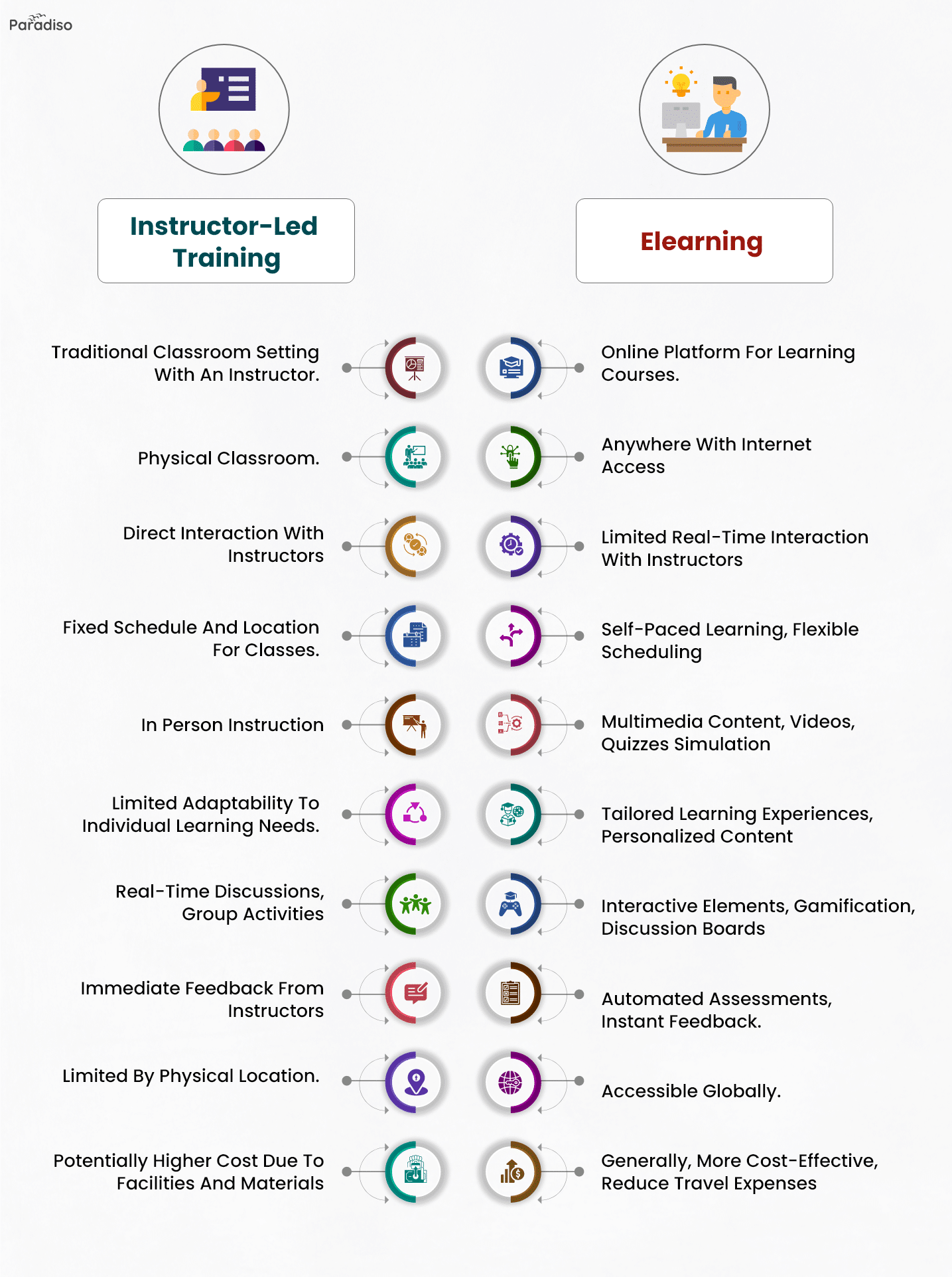In a world where technology and education collide, traditional in-person training faces a challenge Blended Learning. This dynamic approach seamlessly blends the best of both worlds – online convenience and in-person engagement. But which method holds the key to effective learning?
Blended Learning, a revolutionary approach that combines both in-person and online elements, has gained significant traction for its ability to deliver flexible, efficient, and personalized learning experiences. However, many organizations still grapple with the decision of whether to fully embrace this innovative model or stick with the time-tested traditional Instructor-Led Training (ILT) approach.
This blog aims to explore the key differentiators between Blended Learning and ILT, analyze the potential benefits and drawbacks of each, and ultimately help you make an informed decision on whether transitioning to a blended approach is the right move for your organization’s training programs.













